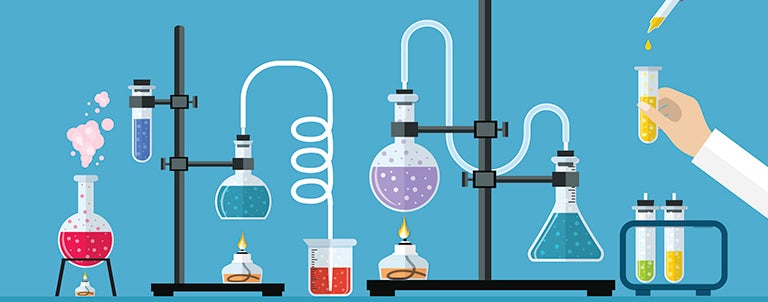The presidential election has brought many democratic issues into stark relief — among them freedom of speech, freedom of religion, freedom of assembly, freedom of the press, and the power of citizenship. It’s become very clear in the wake of the election that Americans are separating into groups with their own worldviews, their own sources, and their own facts. We have lost sight of the vital connection between the symbols, texts, sounds, places, ideas and artifacts that make up the fabric of this nation and the present.
We think building a foundation of common knowledge is an antidote to this trend. That’s why the Aspen Institute Citizenship and American Identity Program created What Every American Should Know, an initiative that asks Americans to answer the question: “What do you think Americans should know to be civically and culturally literate?”
This series of blogs highlights significant historical properties and collections that have been preserved by Save America’s Treasures, a public-private partnership between the National Park Service and the American Architectural Foundation. These artifacts, and all of the terms on the growing list of What Every American Should Know, add up to a common American culture that is even greater than the sum of our diverse parts.
Recently, a new phrase entered the political lexicon: the “deconstruction of the administrative state.” What does it really mean for democracy? One answer lies in the four freedoms outlined by President Franklin D. Roosevelt in his 1941 State of the Union address. It is the world order that grew out of his four simple truths of American democracy that is now slated for deconstruction or demolition.
What will result from this vision of deconstructed democracy? Potentially, a country much like the isolationist US before World War II. In 1930s America, fascism was popular. For example, William Randolph Hearst and Adolph Hitler agreed on a deal to use his empire of newspapers, magazines, and newsreels as channels for German propaganda to show Germany as a miracle of 20th-century progress.
If this sounds familiar to Americans today it is no coincidence. Fake news and propaganda were as rampant in the 1930s as they are now. The refrain of the corporate elite of the 1930s, who saw FDR’s New Deal as a threat to prosperity and enterprise, is being heard again as repealing regulations, tax cuts, and changes in the health care are being touted as the tonic to restore America to greatness. Much like today, fear and hysteria were also in the air in the 1930s.
Take labor strikes, for example. Strikes like the closing of all west coast ports by the longshoremen in 1934 were in the media narrative of the day as the work of radicals and communist agitators threatening American security. “Shoot, Kill, Frisco Riot Troops Told” was one of many such headlines in Hearst’s San Francisco Examiner about the 1934 strike. In truth, this labor action was one of the most widespread general strikes in US history. It changed employer-dictated labor practices and was a prelude to FDR’s National Labor Relations Act, which passed the following year.
The San Francisco Examiner photograph archive, with its 3 million negatives, contains a vivid record of the 1934 strike and the Great Depression. This window on American life was preserved in part by Save America’s Treasure along with the Hearst metrotone newsreels. Although news was the subject, newsreels were entertainment, and they often blurred the lines between fact, fiction, spin, and propaganda.
No one understood the power of newsreel to help people process current events better than FDR. He used newsreels to talk intimately with Americans about his New Deal programs and the changing relationship between Americans and their government. To FDR, society and government had a duty to help the poorest and most vulnerable citizens meet their basic needs by providing the dignity of work and opportunity.
Although these efforts brought stability and jobs back, the Great Depression still lingered eight years after FDR took office. By then Congress had no interest in expanding federal power or new programs. And FDR seemed to recognize the New Deal was at an end as he broke ground on the first presidential library in 1939. A year later the president held an inaugural ceremony, opening the library and post-presidential office at his home in Hyde Park, New York.
On July 5, FDR held an impromptu conversation with the press, which would set a course for the nation and the world. Sitting behind his desk in the new office, FDR tried out some ideas on the reporters. He began by ticking off several freedoms, and with some prompting from reporters, he embellished on a couple more. Roosevelt’s informal exchange with reporters was freedom of expression at work. And a preview of one of the most famous speeches in American history—the four freedoms.
Roosevelt said to Congress and the nation on January 6, 1941: “In the future days, which we seek to make secure, we look forward to a world founded upon four essential human freedoms. The first is freedom of speech and expression – everywhere in the world. The second is freedoms of every person to worship god in his own way – everywhere in the world. The third is freedom from want…everywhere in the world. The fourth is freedom from fear…anywhere in the world. That is no vision of a distant millennium. It is a definite basis for a kind of world attainable in our own time and generation.”
All the words leading up to this vision of a world transformed by democracy focused on the war, which he believed would soon engulf the country. The millions of Americans listening on radios that day remained reluctant, many more swayed by Charles Lindbergh who spoke for the America first movement against joining the war in Europe.
Everything changed 11 months later with the attack on Pearl Harbor. The four freedoms — later popularized by Norman Rockwell’s iconic illustrations — were embraced by millions of citizens as the American way, not only during World War II but also in the generations that followed. Out of the ruins of the war grew a network of global institutions and trade agreements guided by Roosevelt’s vision of a shared prosperity. In this country, the march for civil rights, the campaign to end poverty, the demand for equal rights for women, the fight to protect the environment, and the push for the Affordable Care Act to provide health care for the poor and uninsured also flowed from this vision of democracy.
Yet like the 1930s, the recent election has reignited a fierce conservative, reactionary, and corporate opposition to the legacy of the New Deal, and its spiritual extension in the four freedoms. Not by outright aggression, but by propaganda and spin designed to discredit these four pillars of a democratic society. Economic nationalism, militarization, and the allure of Russian authoritarianism are echoes of the 1930s. The political game is the same as it was then for the American Liberty League and America First: Weave a counter-narrative so people forget their past and in the process drain the institutions of government of the spirit and intent of freedom from fear, freedom from want, freedom to worship in your own way, and freedom of expression and speech.
Save America’s Treasures has made it possible to be in touch with the democratic lives and labors of FDR and his generation with its preservation of the following—Hearst metrotone newsreels at the UCLA Film and Television Archive; the San Francisco Examiner photography archive at the University of California; Rockwell’s iconic four freedoms have been restored and will tour the US and travel overseas for the first time this year; and the desk and office of Roosevelt used to brainstorm his notions of freedom were restored. These are a few of the SAT projects that allow us to reflect on and explore the New Deal, and its lens on this generation’s struggle for democracy.


